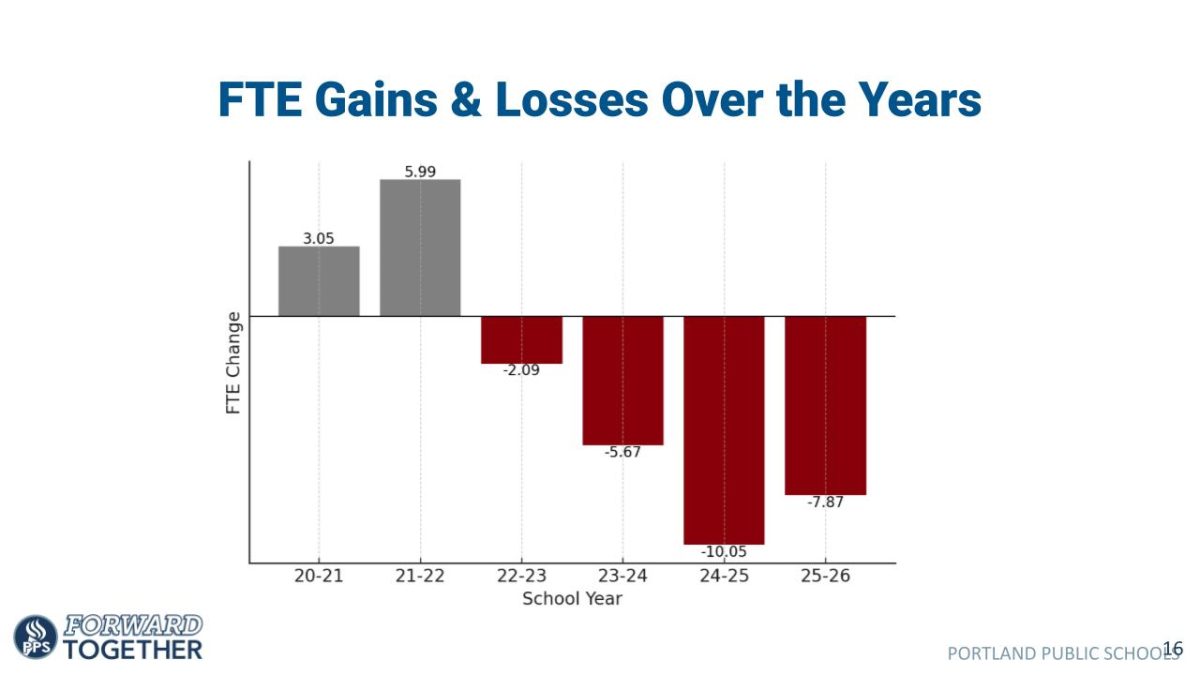As students at Franklin prepare to take both the Preliminary Scholastic Aptitude Test (PSAT) and the Preliminary American College Testing (PreACT), which are practice exams for the SAT and ACT tests, there is often confusion and questions over what these tests involve. To put it concisely, the SAT and the ACT are two standardized tests given to high school students to measure their knowledge of core subjects before applying to college. While both tests have similar concepts, they do vary in the exact content of the test. The SAT has three sections: reading, writing and language, and math. The ACT similarly has English, math, and writing sections, but also includes a science section and another writing section that is optional.
There are multiple purposes for these standardized tests, but they’re mainly used during the college admissions process. Tim Anderson, lead SAT prep teacher of his company Attest LLC, describes the role these tests play on college applications, stating, “[the SAT] provides an additional metric for colleges and universities to assess a student’s education outside of purely looking at a GPA (Grade Point Average), which varies widely from school to school.” This variation in students’ GPA can largely lie in the competitiveness of schools, as some schools’ academics can be much more demanding than others. At a more demanding school, students may receive a lower GPA than they might at a less rigorous school. This does not mean that students don’t work hard for their grade or that grades hold no value on college applications, but instead, as Anderson finds, “they need to be paired with other metrics.” These standardized tests are one way this can be done on college applications.
Amy, who prefers to keep her last name anonymous, is a private tutor who helps prepare students for the SAT and ACT, and shares college admissions advice online. She agrees with Anderson, but adds that it is important to keep in mind if applying to a competitive college that “since there are so many students at that high level with those good test scores, [colleges] look at other factors like essay[s], activities, awards, etc.” This highlights that while test scores serve a role in college admissions, they are not the whole picture of someone’s skills and abilities. Amy advises students to still take either the SAT or ACT, however, if students “try their absolute best and don’t get such a good score, relative to the school they want to go to, they don’t have to submit it.”
The ability for students to choose to submit or not submit their test scores is becoming a growing trend as many colleges continue to opt to be test optional. A report from Inside Higher Ed. finds that of the colleges that currently use the Common Application, only 4% require test scores. This allows students who apply to these test-optional schools to choose for themselves whether or not to submit their SAT or ACT scores.
Despite more and more colleges going test optional, Anderson highlights an important detail for students to know when applying, stating, “The vast majority of test-optional schools are test-optional for admissions only, not for scholarship consideration [through that school].” Because of this, many students who cannot afford to go to college without financial aid through scholarships must submit scores anyway. While not all scholarships require test submission, this acts as a limiting factor in allowing students to refrain from submitting any test scores during the admission process. This factor specifically affects students coming from low income households as they rely most heavily on gaining scholarships to be able to afford college.
Another implication of test-optional admissions, Anderson says, is “The rest of a test-optional student’s application is held to a much higher standard than the application for a student who submits a great test score.” Without a test score, colleges will look at other parts of the application to analyze a student’s readiness for college. As an alternative for a score, a college may look at how the student has performed in college-level classes such as AP or dual enrollment classes. Just like the SAT and ACT provide information on a student’s college readiness, which is key during the admissions process, looking at a student’s capability in these classes provides similar information. “If you have done well in college classes already, then you will most likely do well in them once you are at their college as well,” Anderson notes.
However, the focus of an application shifting to put more weight on factors outside of test scores can be seen as a result of discourse on how much a single standardized test can show about a student’s academic skills and effort. In a compiled list of test-optional colleges from Fair Test, there are more than 80 colleges in the US that are test-free. Being test-free means that during the admissions process test scores are not considered at all.
Despite standardized tests aiming to get data on a large range of students’ academic performance through one test, that can limit what the tests truly reveal. They put more emphasis on fast responses rather than critical thinking and the ability to work through and problem-solve, both of which are vital skills in life and school. Many colleges now take this into consideration when opting to be test-optional or test-free.
These tests also reveal the inequalities of our education system, as historically disadvantaged groups on average receive lower scores compared to groups that tend to have more resources. These inequalities are largely repercussions from the lasting effects of race based segregation in our American school systems that have led to differences in quality of education. Accessibility to resources and education in different schools can lead to certain groups performing better on these exams. Resources to prepare for these exams are disproportionately available for students who can afford to pay for private tutoring and other expensive studying material. However, there are free options for students who want to study, but can’t afford to pay for these resources.
Amy advises from her experiences working with a variety of students, that for students interested in private tutoring, they should first “look internally and consider the time that they want to put in and what score is their objective… Students should start by just taking a full mock test, getting their baseline, and then using a platform like Khan Academy to continue and self-study.”
Free online prep services like Khan Academy, when utilized, can help students from all backgrounds succeed at the SAT or ACT. Many students often view themselves as “bad test takers,” but through preparing for exams like these, students can continue to grow in their abilities. Amy specializes in helping students prepare for the math section and has specifically found that it can be most helpful to “review a lot of fundamentals.”
There are many paths that students planning to go to college might choose when regarding the SAT or ACT. Maybe it is not the thing for you. You would rather apply to a test-optional school and focus on working hard in other parts of your application whether that’s classes, sports, or hobbies. On the other hand, maybe you want to utilize the SAT or ACT either as a strong data point on your application or for access to scholarships to help fund your college education. If that is the case, don’t be too intimidated by these long tests, and begin studying or working at becoming confident in your abilities on the test.
If you’re interested in taking the exam, familiarize yourself with the test you are planning to take and become accustomed to what sort of questions they include. Anderson ends his advice stating, “we live in the information age: not only can copies of old tests be found all over the internet, but there are thousands of YouTube videos and websites that cover just about any aspect of the SAT that can be imagined… There are also private tutoring [and] class options available but they aren’t necessary and I encourage students not to equate price with quality.”
The SAT and ACT can both be wonderful tools for a student to push themselves ahead in college applications and gain opportunities for scholarships to make college more financially accessible. It is important to understand the role these tests play during the admissions process so students can make the best decisions for themselves on how they’ll study, take, and submit these exams.




































Brooke DeNisco • Oct 19, 2023 at 5:15 pm
It seems very confusing that Franklin is offering the pre act and the SAT. I asked the vice principle and he said the school hadn’t decided about the SAT or ACT for next year. They did sign a five year contract for the Pre ACT and won’t have PSATS at Franklin anymore. It seems like students should be given more specific information about which tests are offered.